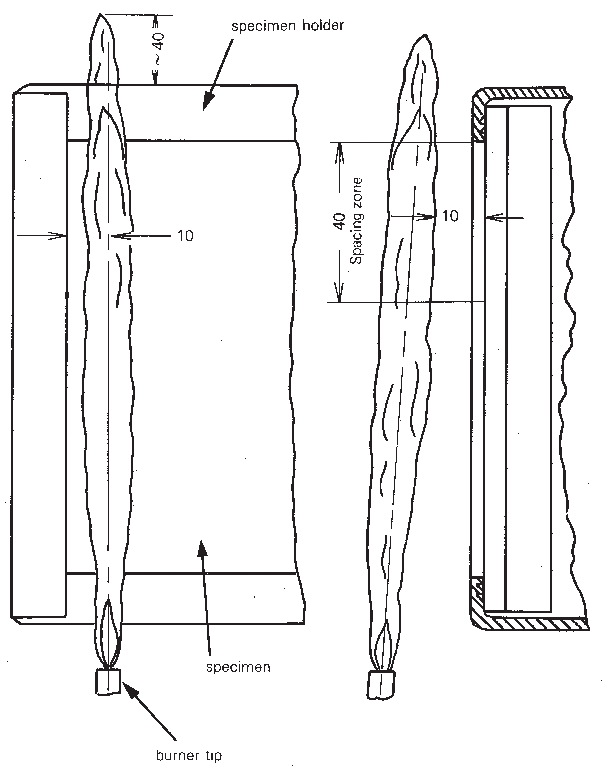As a means of assuring continued proper adjustment of the
apparatus, the following tests should be performed on a daily basis,
or more frequently if the nature of the specimens makes this necessary.
6.2.1 Adjustment of the Pilot Burner, the acetylene and
air supply should be adjusted to provide a flame length of about 230
mmfootnote. When this has been done, the
flame length as viewed in a darkened laboratory will be seen to extend
about 40 mm above the upper retaining flange of the specimen holder.
The burner spacing from the specimen is adjusted while the radiant
source is operating by the use of softwood splines of 3 mm thickness
and of 10 mm and 12 mm width. When these splines are moved during
a two second exposure along the flame length, between the pilot burner
flame and a dummy specimen surface, the 10 mm spline should not be
charred but the 12 mm spline should show char. With the specimen in
the vertical position, the charring of the 12 mm spline should occur
over a vertical distance of at least 40 mm from the upper exposed
edge of the specimen (see Figure
9).

Figure 8 Pilot burner details and connections

Figure 9 Position of pilot flame
6.2.2 The stack gas thermocouples should be cleaned
by light brushing at least daily. This cleaning may be required even
more frequently, in some instances before each test, when materials
producing heavy soot clouds are tested. These thermocouples should
also be individually checked for electrical continuity to ensure the
existence of a useful thermojunction. Following daily cleaning of
the parallel connected stack gas thermocouples, both they and the
compensating junction should be checked to verify that the resistance
between them and the stack is in excess of 106 ohms.